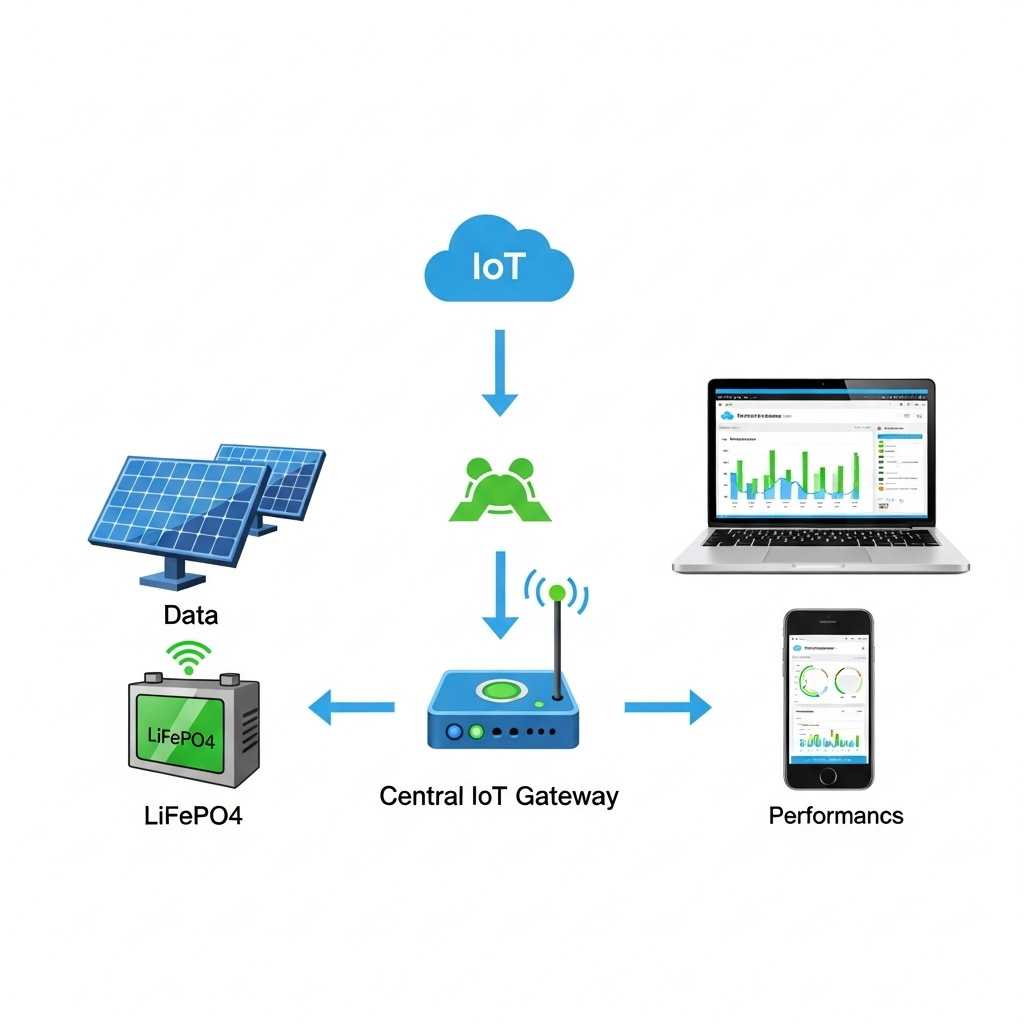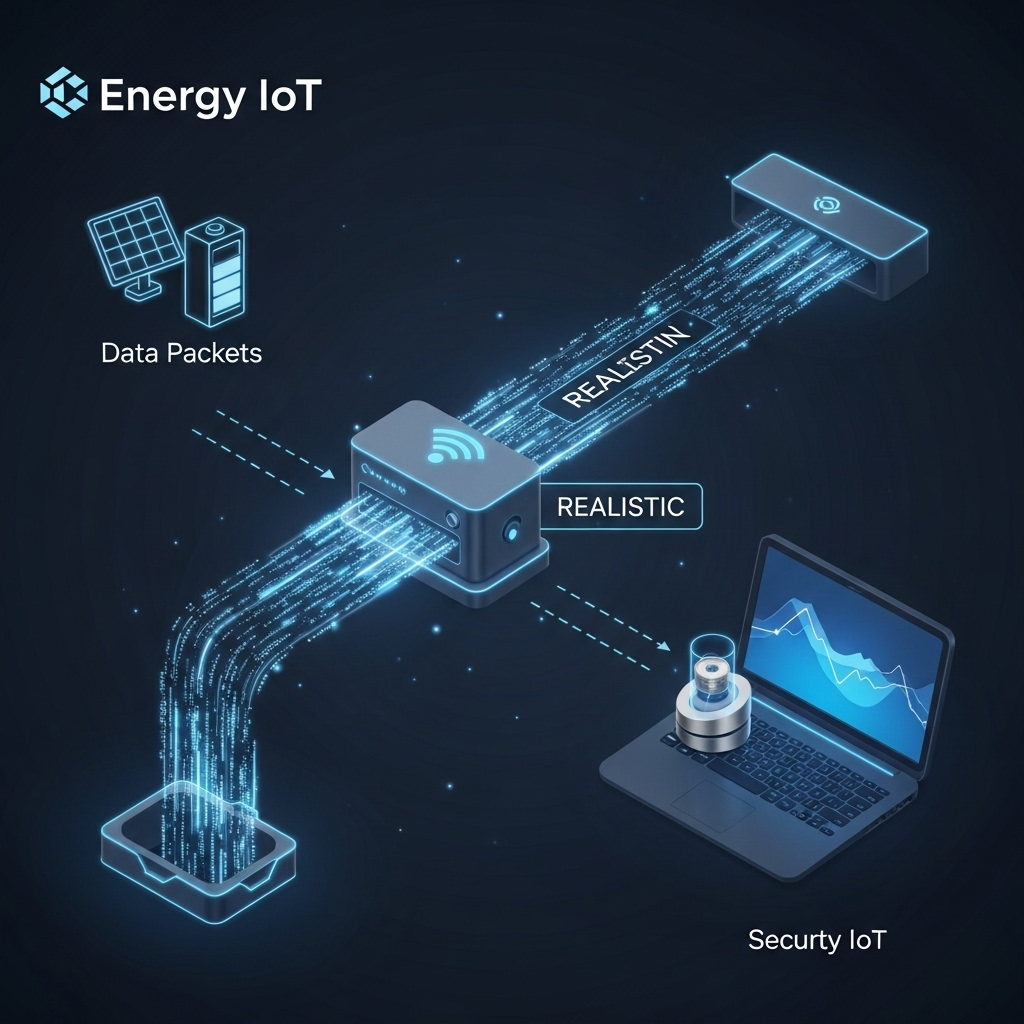As energy storage systems (ESS) become more common, ensuring their safety is paramount. The UL 9540 standard sets the benchmark for ESS safety, and a robust IoT monitoring architecture is fundamental to achieving compliance. An effective monitoring system does more than just display data; it acts as the central nervous system, ensuring the entire system operates safely and reliably. This roadmap outlines how to design and implement an IoT monitoring architecture that aligns with the stringent requirements of UL 9540.
Understanding UL 9540 and Its Impact on IoT Monitoring
Achieving compliance starts with a clear picture of what the standard demands. UL 9540 is not just a hardware certification; it evaluates the entire system's ability to operate safely under various conditions, making the monitoring architecture a critical piece of the puzzle.
What is UL 9540? A Safety-First Standard
UL 9540 is the definitive safety standard for Energy Storage Systems and Equipment. It covers the complete system, including the battery pack, the power conditioning unit (inverter), and the control system that manages their interaction. Its primary goal is to mitigate risks such as thermal runaway, electrical hazards, and mechanical failures. The standard requires the system to be ableto detect potential hazards and execute protective measures automatically.
Key Monitoring Requirements Implied by UL 9540
While UL 9540 does not prescribe a specific IoT design, it implies a clear set of functional requirements for monitoring and control. Your system must provide:
- Continuous Oversight: The system needs to constantly track critical parameters. This includes battery cell voltage, temperature, state of charge (SoC), and current. Any deviation from safe operating limits must be detected instantly.
- Automated Protective Actions: The monitoring system must be integrated with controls that can take immediate action. If a hazardous condition is detected, the system must be able to disconnect the battery or shut down the inverter to prevent failure.
- Reliable Communication: The communication links between the battery management system (BMS), the inverter, and the central controller must be highly reliable. A loss of communication could compromise the system’s ability to respond to a safety event.
Core Components of a UL 9540-Compliant IoT Architecture
A compliant IoT architecture is built in layers, with each layer contributing to the overall safety and reliability of the system. From the edge device collecting data to the cloud platform enabling remote control, every component must be designed with security in mind.
The Edge Layer: Secure Data Acquisition
The edge is where data originates. The integrity of this data is crucial for all subsequent safety functions. This layer includes the BMS, which is the first line of defense, monitoring the battery cells directly. An edge gateway then aggregates data from the BMS and other components like the inverter. This gateway should perform initial data processing and, most importantly, establish a secure connection for transmitting data to the cloud. Choosing hardware certified to standards like UL 1973 for batteries and UL 1741 for inverters is a foundational step, as these are often prerequisites for full UL 9540 system certification.
The Communication Layer: Encrypted and Reliable Data Transit
Once data leaves the edge gateway, it must be protected in transit. A study from the International Renewable Energy Agency, Quality infrastructure for smart mini-grids, highlights that modern systems use end-to-end encryption to secure data. Your architecture should enforce strong encryption standards, such as 128-bit AES, and use secure protocols like HTTPS over TLS 1.2. To further enhance security, communication should be restricted to outbound connections on standard ports like 443. This prevents external actors from initiating contact with the device, drastically reducing the attack surface.
The Cloud Platform: Centralized Control and Analytics
The cloud platform serves as the central command center. Here, data is stored, analyzed, and visualized, providing operators with a comprehensive view of the ESS's health. More importantly, the cloud platform enables remote diagnostics and control actions. In a potential fault scenario, an operator can use the platform to initiate a shutdown or adjust operating parameters. The platform itself must be secure, with features like certificate-based authentication (e.g., 2048-bit RSA) to validate all connections and secure data storage solutions that comply with regional data privacy regulations.
Building Your Roadmap: A Step-by-Step Approach
Creating a compliant architecture requires a methodical process. Following a structured roadmap helps ensure all safety and security requirements are addressed from the outset.
Step 1: Define System Requirements and Risk Assessment
Begin with a thorough risk assessment tailored to your specific ESS application. Identify all potential failure modes and define the critical parameters that must be monitored to prevent them. This analysis will inform the design of your monitoring system, including the necessary sensor resolution, data sampling rates, and automated response logic. To effectively monitor your system, you need to track key metrics. A comprehensive list of performance indicators can help you define what data to collect. For an in-depth look, see this ultimate reference on solar storage performance.
Step 2: Select Hardware and Software with Compliance in Mind
Choose components that are already certified or designed with security best practices. This includes everything from the BMS and inverter to the IoT gateway and cloud software. Selecting a platform that already incorporates strong security features simplifies the compliance process. For instance, systems that use predictive algorithms based on weather and grid data can optimize battery cycles while maintaining safety, a feature noted in advanced residential systems.
Step 3: Implement Secure Data Handling and Access Control
Security is not a feature you add at the end; it must be integrated throughout the architecture. Enforce end-to-end encryption for all data, whether at rest or in transit. Implement strict, role-based access control (RBAC) on the cloud platform to ensure only authorized personnel can view sensitive data or execute control commands. Plan for regular security audits, penetration testing, and a robust process for deploying secure over-the-air (OTA) firmware updates.
Data Management and Security Best Practices
A UL 9540-aligned architecture is built on a foundation of strong data management and security principles. These practices ensure the system is not only safe but also resilient against cyber threats.
Ensuring Data Integrity and Availability
The data from your ESS is the basis for every safety decision, so its integrity is non-negotiable. Your architecture should include mechanisms to detect data tampering, such as checksums or digital signatures. To ensure availability, consider data redundancy and system fail-safes. If the primary cloud connection is lost, the edge device should be capable of operating autonomously to maintain safety. As noted in the IRENA report Grid Codes for Renewable Powered Systems, reliable data is also becoming crucial for advanced functions like grid stabilization, adding another layer of importance.
Advanced Security Measures for IoT Platforms
Go beyond basic encryption with advanced security features. Implement secure boot on edge devices to ensure they only run trusted firmware. All OTA updates should be digitally signed and encrypted to prevent malicious code from being installed. Network segmentation can also be used to isolate the ESS monitoring system from other networks, limiting potential lateral movement by attackers. The following table summarizes key security features and their importance.
| Feature | Description | Importance for UL 9540 |
|---|---|---|
| End-to-End Encryption | Secures data from the sensor to the cloud platform. | Prevents data interception and tampering, ensuring control commands are authentic. |
| TLS 1.2+ | Industry-standard protocol for secure communication channels. | Ensures data in transit is protected from eavesdropping. |
| Certificate-Based Authentication | Verifies the identity of devices and servers before communication. | Prevents unauthorized devices from connecting to the network. |
| Secure OTA Updates | Encrypted and signed firmware updates. | Protects against malicious firmware that could compromise safety functions. |
| Role-Based Access Control | Limits system access to authorized personnel only. | Prevents unauthorized changes to safety settings or system operation. |
Looking Ahead: The Future of Compliant Monitoring
Building an IoT architecture aligned with UL 9540 is not just about meeting today's safety standards; it is about creating a foundation for the future. A secure and scalable monitoring platform is essential for deploying next-generation features like AI-driven predictive maintenance, which can identify potential faults before they occur. It also enables participation in advanced grid services, turning distributed energy resources into valuable grid assets. By prioritizing safety and security in your IoT design, you build energy storage systems that are not only compliant but also intelligent, resilient, and ready for the future of energy.
Disclaimer: This article provides general information and is not a substitute for professional engineering or legal advice. Always consult with certified professionals to ensure your system design meets all applicable codes and standards, including UL 9540.
Frequently Asked Questions
Does UL 9540 explicitly mandate a specific IoT architecture?
No, UL 9540 focuses on the functional safety outcomes. It requires a system to monitor for unsafe conditions and respond appropriately. The IoT architecture is the 'how'—the mechanism you design to reliably meet these safety requirements. Your architecture must prove it can perform these functions without fail.
Can I use open-source software for my monitoring platform?
Yes, but you must ensure it meets stringent security and reliability standards. This includes conducting thorough security audits, implementing robust encryption, and having a plan for timely patching of vulnerabilities. The responsibility for compliance rests with the system integrator.
What is the difference between UL 9540 and UL 9540A?
UL 9540 is the safety standard for the Energy Storage System as a whole. UL 9540A is a test method used to evaluate thermal runaway fire propagation in battery energy storage systems. The data from UL 9540A testing helps determine the necessary fire safety and mitigation measures required to achieve UL 9540 certification.





Leave a comment
All comments are moderated before being published.
This site is protected by hCaptcha and the hCaptcha Privacy Policy and Terms of Service apply.